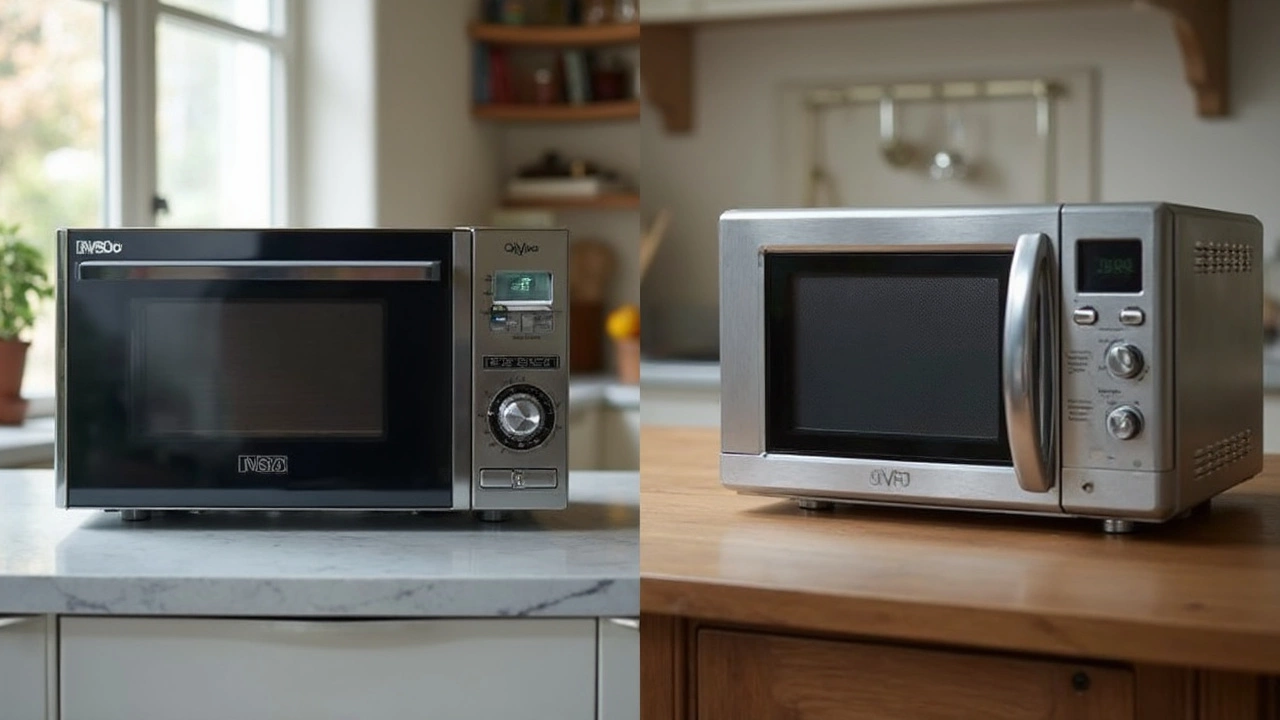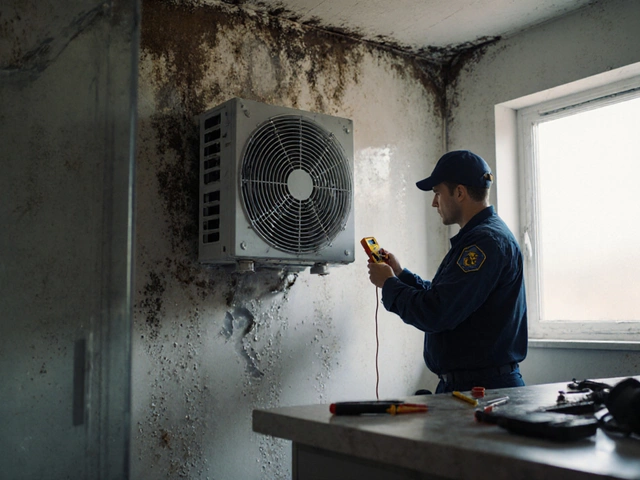Ever had your microwave unexpectedly give up the ghost? Before you rush out to buy a new one, it's worth considering if a repair could do the trick. Microwaves are practically the superheroes of the kitchen—heating leftovers, popping popcorn for movie nights, and even defrosting dinner in double-quick time. But when they start acting up, the big question is: should you fix it or nix it?
First off, think about the problem at hand. Is it something simple like a blown fuse or a door that doesn't quite latch? These are usually fixable without much fuss. But if your microwave is making strange noises or not heating at all, it might be time to weigh the costs of repairs against the price of picking up a new one.
Repairs can be surprisingly affordable for minor issues, but when parts start getting exotic, costs can skyrocket. Plus, older models might not be worth the investment if they've got a good run under their belt. In upcoming sections, we'll delve into common microwave issues you might face and provide some tips on when to roll up your sleeves and when to call the experts.
- Common Microwave Problems
- Cost of Repair vs. Replacement
- DIY Repair Tips
- When to Call a Professional
Common Microwave Problems
Alright, let's talk about those pesky microwave repair issues you've probably faced at least once. Some problems are more common than others, and knowing what you're up against can save you a heap of trouble—and maybe some cash. Here are the typical culprits when your microwave isn’t behaving.
No Heat
This one's a head-scratcher. If your microwave turns on but doesn't actually heat anything, the usual suspect is the high voltage diode. It could've called it quits, leaving your microwave all flash and no heat. Or maybe it's the magnetron, which is the part that does the heavy lifting in heating your food. Replacing a magnetron can be pricey, so weigh this repair carefully against buying a new unit.
Sparking Inside
Witnessing sparks inside your microwave can be heart-stopping. It often happens when bits of metal—a sneaky fork or some tin foil left on the food—are inside while it's running. Even a well-worn waveguide cover can cause sparks, needing a quick replacement.
Strange Noises
Rattling, humming, or buzzing noises aren't the microwave's way of singing. These sounds usually point towards something amiss. It might be just a loose roller ring or turntable, but noises can also hint at a faulty motor.
Door Won’t Close
If you can't get the door to shut properly, it might be due to a faulty door latch or springs. These repairs are usually straightforward and quick. But remember, a microwave won't start unless the door's securely closed.
Buttons Not Responding
Found yourself poking buttons with no response? Could be a problem with the control panel or touchpad. Sometimes, it's just a sticky surface (clean that bad boy!), and other times, it's an internal wiring issue.
Addressing these problems depends on how confident you feel with a screwdriver in hand. Not everything demands a pro—some fixes are easier than you think. But remember, always unplug that appliance before poking around inside or you might indeed see some sparks fly!
Cost of Repair vs. Replacement
When your trusty microwave goes on the fritz, the first thought that pops into your mind is probably, "Is this going to cost me a fortune?" Understanding the costs involved in microwave repair versus getting a brand new one can make all the difference between a well-spent dollar and unnecessary spending.
Sizing Up the Repair Costs
Repairing a microwave can be surprisingly economical—or not, depending on the issue. Simple fixes like replacing a blown fuse or a faulty door latch might only set you back about $50 to $100 if you're handy enough to tackle it yourself. On the other hand, a professional repair could cost more when you add labor charges to the mix.
Then there are repairs like replacing a magnetron or a circuit board. These can run upwards of $200, which is a significant outlay if you only paid $120 for the microwave in the first place.
When to Consider Replacement
If your microwave is an older model, say over seven years, and needs major repairs, replacing it could be the smarter move. Newer models offer more energy efficiency and often better safety features, which can save you in the long run.
It's also worth thinking about how much you originally paid for the microwave. If the repair cost is more than 50% of what a new microwave would cost, it's probably time to start shopping around.
How About Some Numbers?
Here's a quick look at average costs:
| Repair Type | Average Cost |
|---|---|
| Fuse Replacement | $50 - $100 |
| Door Latch Repair | $70 - $130 |
| Magnetron Replacement | $100 - $200 |
| Circuit Board Repair | $150 - $300 |
Always factor in the age and condition of your appliance, though. It might not be worth sinking money into something that's ready for retirement.

DIY Repair Tips
Getting hands-on with your microwave might sound daunting, but tackling minor fixes yourself can save you a few bucks. Let's dive into some simple microwave repair tricks most folks can handle without breaking a sweat.
Check the Door Latch
If your microwave's not starting, the issue might be as straightforward as a faulty door latch. Microwaves won't run if the door isn't secured properly—it's a safety thing. Open up your microwave and give that latch a look. If it's loose or wobbly, try tightening the screws or replacing the latch outright.
Blown Fuse
A blown fuse is another common problem that's easy to tackle. First, make sure you unplug the microwave—safety first! Locate the fuse panel, usually behind a small cover inside the housing. Replace the blown fuse with one that matches its rating. If it keeps blowing, though, you'll want to dig deeper or consider professional help.
Cleaning the Turntable
Sometimes a greasy or sticky turntable causes issues. Give it a good clean with warm soapy water. If the turntable’s motor is the problem, you can often replace it without too much trouble.
Simple Triages Through Reset
If your microwave's acting funky, like buttons not responding or timing out oddly, a reset can work wonders. Simply unplug it for about ten seconds and plug it back in. It's like giving the microwave a quick nap to reset its circuitry.
LED Light Replacement
If the bulb's out, you don't need to stumble around in the dark. Replace it yourself by finding the light cover on the inside or back of the appliance. Unscrew the cover and pop in a new bulb.
Some fixes are hassle-free, but don't sweat it if you're stumped. When in doubt, it's okay to call in an expert. And remember, no sense risking safety or voiding a warranty for a DIY project.
When to Call a Professional
So, you've tinkered and tried your best DIY tricks, but your microwave is still not playing ball. It can be tricky to decide when to bring in the pros, but here’s some solid advice you can count on.
Complex Issues and Safety Concerns
If your microwave has issues that sound potentially dangerous, like electrical sparks or the smell of burning wires, it's time to call a professional. Microwaves are high-voltage appliances, and messing with components like the magnetron or high-voltage capacitor can be seriously hazardous. It's always better safe than sorry.
When Parts Need Replacing
Parts like the capacitor or the high-voltage diode are essential to your microwave’s safe operation. If these need replacing, a microwave repair expert will have the tools and the know-how. Plus, many manufacturers will void the warranty if unauthorized repairs are attempted.
Cost-Benefit Analysis
If your microwave is newer and the repair cost is less than half the price of a new one, calling a professional is often the smarter choice. Sure, fixing it involves a service fee and parts costs, but sometimes it's the best way to extend your appliance's lifespan.
Take a cue from this rough cost idea:
| Repair Type | Average Cost (USD) |
|---|---|
| Basic Repair (Door, Fuse) | 50-100 |
| Medium Repair (Capacitor, Diode) | 100-200 |
| Complex Repair (Magnetron, Circuitry) | 200+ |
So next time your microwave is more trouble than it’s worth to tackle yourself, calling in a professional could save you a whole heap of hassle—and get you back to enjoying those perfectly popped corn kernels sooner rather than later.




